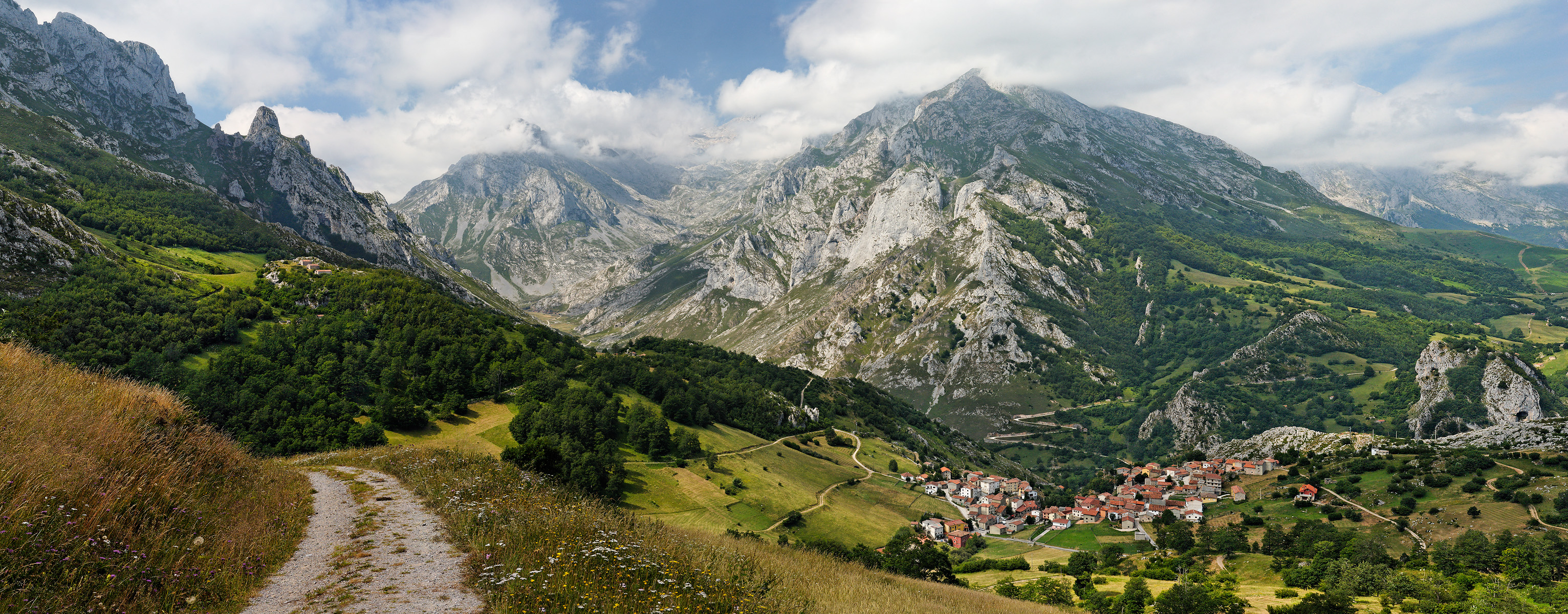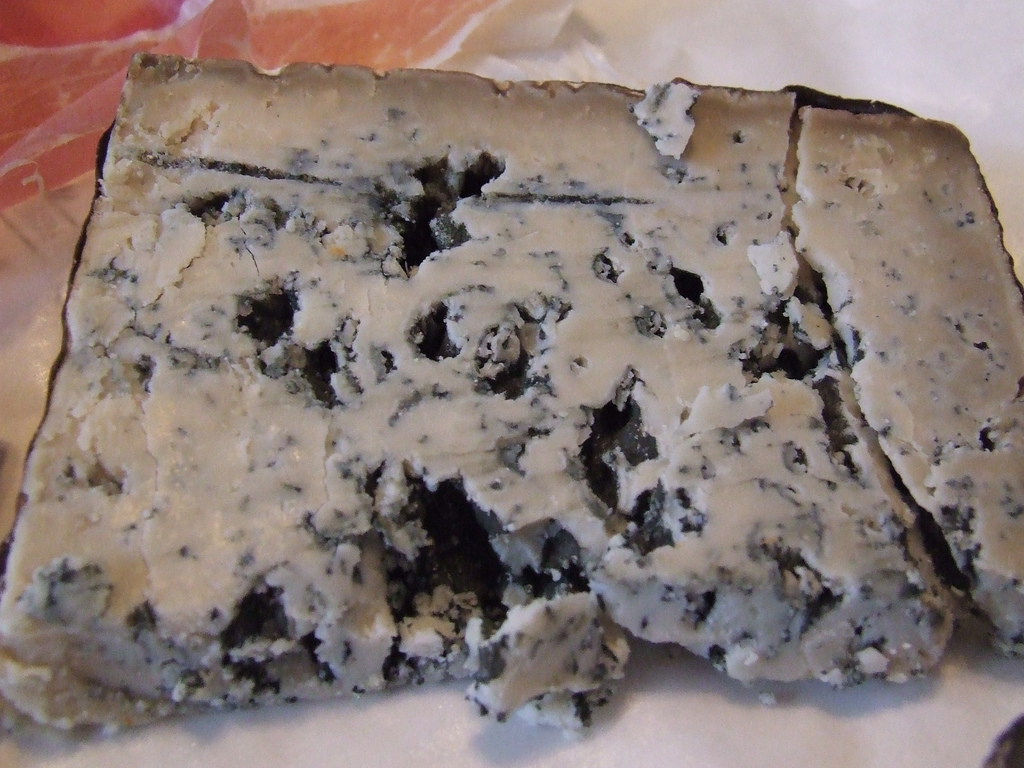|
Cabrales
Cabrales is a municipality in the autonomous community of Asturias, northwestern Spain. It is situated between the Sierra de Cuera and the Picos de Europa, and is a region famous for its Cabrales cheese. Important towns within the municipality include Arenas de Cabrales, one of the primary objectives of the Battle of El Mazuco in 1937. Nowadays Arenas' economy seems to be primarily based on tourism, although unlike many tourist centres it retains its authentic style – and hospitality. Parishes Cabrales municipality is divided into nine parishes: * Berodia * Bulnes *Carreña *Las Arenas * Poo *Prado (Prau in Asturian) * Puertas *Sotres Sotres is a village and parish in the Asturian municipality of Cabrales, in Spain, located 19 km from Carreña, the municipal capital, in the eastern extreme of the province. The highest of all villages in the Picos de Europa National Park ... * Tielve References Municipalities in Asturias Picos de Europa * { ... [...More Info...] [...Related Items...] OR: [Wikipedia] [Google] [Baidu] |
Cabrales Cheese
Cabrales (Spanish: ''queso de Cabrales'') is a blue cheese made in the artisan tradition by rural dairy farmers in Asturias, Spain. This cheese can be made from pure, unpasteurized cow’s milk or blended in the traditional manner with goat and/or sheep milk, which lends the cheese a stronger, spicier flavor. Official Spanish government regulatory board (in Spanish: see ext. refs for translation) All of the milk used in the production of Cabrales must come exclusively from herds raised in a small zone of production in , in the mountains of the . Pr ...
|
Berodia
Berodia is one of nine parishes (administrative divisions) in Cabrales, a municipality within the province and autonomous community of Asturias, in northern Spain. It is in size with a population of 194 (INE INE, Ine or ine may refer to: Institutions * Institut für Nukleare Entsorgung, a German nuclear research center * Instituto Nacional de Estadística (other) * Instituto Nacional de Estatística (other) * Instituto Nacional Elec ... 2011). The Díaz Inguanzo Palace or Palacio de la Torre is located in a valley, near the Iglesia de Sta. María Magdalena (Church of Mary Magdalene) and a few hundred meters from the town. The palace was designated as a historic monument in 1994. Villages * Berodia * Inguanzo References Parishes in Cabrales {{asturias-geo-stub ... [...More Info...] [...Related Items...] OR: [Wikipedia] [Google] [Baidu] |
Puertas (Cabrales)
Puertas is one of nine parishes (administrative divisions) in Cabrales, a municipality within the province and autonomous community of Asturias, in northern Spain , image_flag = Bandera de España.svg , image_coat = Escudo de España (mazonado).svg , national_motto = ''Plus ultra'' (Latin)(English: "Further Beyond") , national_anthem = (English: "Royal March") , i .... It is in size with a population of 137INE2011). Villages * El Escobal * Pandiello * Puertas References Parishes in Cabrales {{asturias-geo-stub ... [...More Info...] [...Related Items...] OR: [Wikipedia] [Google] [Baidu] |
Bulnes (Cabrales)
Bulnes is one of nine parishes (administrative divisions) in Cabrales, a municipality within the province and autonomous community of Asturias, in northern Spain. It is in size with a population of 34 (INE 2011). Villages * Bulnes * Camarmeña Transport No roads reach Bulnes, however it is served by the Bulnes Funicular The Bulnes Funicular ( es, Funicular de Bulnes) is an underground funicular connecting the villages of Bulnes and Poncebos in the Picos de Europa region of the Cantabrian Mountains in Asturias, Spain. Overview The village of Bulnes is located ... from Poncebos. References External links * Parishes in Cabrales {{asturias-geo-stub ... [...More Info...] [...Related Items...] OR: [Wikipedia] [Google] [Baidu] |
Prado (Cabrales)
Prado is one of nine parishes (administrative divisions) in Cabrales, a municipality within the province and autonomous community of Asturias, in northern Spain, near the Picos de Europa mountains. The altitude is above sea level Height above mean sea level is a measure of the vertical distance (height, elevation or altitude) of a location in reference to a historic mean sea level taken as a vertical datum. In geodesy, it is formalized as ''orthometric heights''. The comb .... It is in size with a population of 199INE2011). The postal code is 33555. Villages * Canales * La Molina * Ortiguero * La Salce References Parishes in Cabrales {{asturias-geo-stub ... [...More Info...] [...Related Items...] OR: [Wikipedia] [Google] [Baidu] |
Las Arenas (Cabrales)
Las Arenas is one of nine Parish in Cabrales, a municipality within the province and autonomous community of Asturias, in northern Spain , image_flag = Bandera de España.svg , image_coat = Escudo de España (mazonado).svg , national_motto = ''Plus ultra'' (Latin)(English: "Further Beyond") , national_anthem = (English: "Royal March") , i .... It is in size with a population of 882INE2011). Villages * Arangas * Las Arenas References Parishes in Cabrales {{asturias-geo-stub ... [...More Info...] [...Related Items...] OR: [Wikipedia] [Google] [Baidu] |
Poo (Cabrales)
Poo ( ast, Po) is one of nine parroquias in Cabrales, a municipality of the autonomous community of Asturias, in northern Spain. It has an area of 10.28 km², and a population of 214INE2015) all in the same settlement. Poo is located 158 meters above sea level. It lies 1.5 km from Carreña Carreña is one of nine parishes (administrative divisions) in Cabrales, a municipality within the province and autonomous community of Asturias, in northern Spain , image_flag = Bandera de España.svg , image_coat = ..., the capital of Cabrales. References Parishes in Cabrales {{asturias-geo-stub ... [...More Info...] [...Related Items...] OR: [Wikipedia] [Google] [Baidu] |
Carreña
Carreña is one of nine parishes (administrative divisions) in Cabrales, a municipality within the province and autonomous community of Asturias, in northern Spain. It is in size with a population of 412 (INE INE, Ine or ine may refer to: Institutions * Institut für Nukleare Entsorgung, a German nuclear research center * Instituto Nacional de Estadística (other) * Instituto Nacional de Estatística (other) * Instituto Nacional Elec ... 2011). Villages # Asiego # Carreña # Pandellana References Parishes in Cabrales {{asturias-geo-stub ... [...More Info...] [...Related Items...] OR: [Wikipedia] [Google] [Baidu] |
Asturias
Asturias (, ; ast, Asturies ), officially the Principality of Asturias ( es, Principado de Asturias; ast, Principáu d'Asturies; Galician-Asturian: ''Principao d'Asturias''), is an autonomous communities of Spain, autonomous community in northwest Spain. It is coextensive with the provinces of Spain, province of Asturias and contains some of the territory that was part of the larger Kingdom of Asturias in the Middle Ages. Divided into eight Comarcas of Asturias, ''comarcas'' (counties), the autonomous community of Asturias is bordered by Cantabria to the east, by Province of León, León (Castile and León) to the south, by Province of Lugo, Lugo (Galicia (Spain), Galicia) to the west, and by the Cantabrian Sea, Cantabrian sea to the north. Asturias is situated in a mountainous setting with vast greenery and lush vegetation, making it part of Green Spain. The region has a oceanic climate, maritime climate. It receives plenty of annual rainfall and little sunshine by Spanish ... [...More Info...] [...Related Items...] OR: [Wikipedia] [Google] [Baidu] |
Sierra De Cuera
Sierra de Cuera ( ast, Sierra del Cuera), is a 30 km long mountain chain of the Cantabrian Mountains. The ridge's highest point is Pico Turbina (1315 m). This mountain range is located at 6 km from the sea and runs parallel to the coast. It lies within the Cabrales, Llanes, Peñamellera Alta, Peñamellera Baja and Ribadedeva municipal terms. Recent history The mountains of the Sierra de Cuera were vital to the defence of Asturias during the Spanish Civil War (1936 - 1939) and the key to the Sierra de Cuera was the pass of El Mazuco. Following the fall of Bilbao the troops supporting General Franco's rebellion tried to advance by clearing the Republican defenders from these mountains. In order to do this they planned a pincer movement moving south-west from Llanes and west, along the Río Cares, from Panes towards Cabrales. On both fronts, however, the rugged terrain and the stiff resistance of the Republican loyalists halted the advance during what became known as the Bat ... [...More Info...] [...Related Items...] OR: [Wikipedia] [Google] [Baidu] |
Picos De Europa
The Picos de Europa ("Peaks of Europe", also the Picos) are a mountain range extending for about , forming part of the Cantabrian Mountains in northern Spain. The range is situated in the Autonomous Communities of Asturias, Cantabria and Castile and León. The highest peak is Torre de Cerredo, at an elevation of (8,690 ft). Name A widely accepted origin for the name is that they were the first sight of Europe for ships arriving from the Americas. The name can be traced to Lucio Marineo Sículo, who mentioned the '' Rupes Europae'' in 1530. Ambrosio Morales, chronist of Felipe II of Spain, mentions the ''Montañas de Europa'' in 1572. Prudencio de Sandoval calls them the ''Peñas o Sierras de Europa'' in 1601. Geography The range consists of three major massifs: Urrieles Massif, Central (also known as ''Urrieles''), Eastern (Ándara) and Western (also known as the ''Picos de Cornión''). The Central and Western massifs are separated by the deep Cares river, Cares Gor ... [...More Info...] [...Related Items...] OR: [Wikipedia] [Google] [Baidu] |
Asturian Language
Asturian (; ,Art. 1 de lLey 1/1998, de 23 de marzo, de uso y promoción del bable/asturiano [Law 1/93, of March 23, on the Use and Promotion of the Asturian Language/nowiki>] formerly also known as ) is a West Iberian languages, West Iberian Romance languages, Romance language spoken in the Principality of Asturias, Spain. Asturian is part of a wider linguistic group, the Asturleonese languages. The number of speakers is estimated at 100,000 (native) and 450,000 (second language). The dialects of the Astur-Leonese language family are traditionally classified in three groups: Western, Central, and Eastern. For historical and demographic reasons, the standard is based on Central Asturian. Asturian has a distinct grammar, dictionary, and orthography. It is regulated by the Academy of the Asturian Language. Although it is not an official language of Spain it is protected under the Statute of Autonomy of Asturias and is an elective language in schools. For much of its history, th ... [...More Info...] [...Related Items...] OR: [Wikipedia] [Google] [Baidu] |




